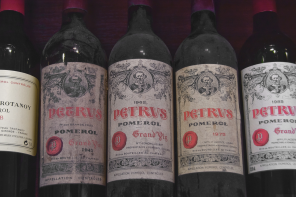On any given day I can open up Facebook, Instagram, Snapchat, etc. and see meals of all caliber from all over the world. I see plates from well known New York chefs and street car tacos from Mexico CIty. I’ll find nearly pornagraphic images of morel mushrooms from the Pacific Northwest and damn beautiful basketfuls of ramps from Kentucky. I can see the fledgling beginnings of food trends and watch as they spread, not just around the typical American food meccas of NYC, San Francisco and Chicago, but to Nashville, Minneapolis and Denver. Cultures are defined by community, and the community of food lovers and chefs is growing. The onslaught of food in social media means passionate diners and talented chefs can connect well beyond the dining room experience, and rapidly shape the state of culinary culture in America.
Like all aspects of culture, the way we view, prepare and consume food is rarely stagnant. Trends change, tastes change, it’s part of what keeps this business entertaining. We’ve seen the powerhouses of old school classical French fine dining wane and be replaced by temples of molecular gastronomy, New Nordic methods and ramen. And those trends too will fade, likely quicker than their predecessors.
[pullquote align=”right” cite=”” link=”” color=”#0396ec” class=”” size=””] I can find foraged produce, a sous vide steak or a perfectly sourced oyster on a menu in damn near any city in the country.[/pullquote]Currently, the rate of change in American food and cooking culture is at a breakneck pace. Multiple television channels devoted to celebrity “chefs” and “foodie” exploits certainly don’t slow the tide, but I think the true cause lies elsewhere; driven not by professional critics or wealthy diners, but propelled by the force of dining rooms full of engaged diners and kitchens, nationwide, staffed with passionate chefs who daily choose to push their industry forward. This sort of growth and change has certainly helped our industry take some great strides. This growing community has supported the growth of heirloom produce, biodynamic farming and pasture-raised meats. We’ve pushed forth a common set of values that are changing an industry. Change fosters creativity, encourages progress and breeds the development of new techniques. As chefs, we get better faster as our community pushes for more. I can find foraged produce, a sous vide steak or a perfectly sourced oyster on a menu in damn near any city in the country.
All of this isn’t without its drawbacks, however. Successful concepts get replicated in new cities by different restaurateurs constantly, and often in a manner that’s more imitation than inspiration. How many bakeries offered a knockoff-Cronut within weeks of Dominque Ansel’s pastry taking America by storm? Regional trends get diluted as their national popularity grows. The demand for out-of-season or out-of-region products increases as the general population’s tastes change. Heirloom tomatoes are delicious, but I don’t want to see them on my burger in February. While many recent culinary trends are pushing for more integrity in our food system, integrity is a difficult thing to scale.
So how do we pin down the state of America’s culinary scene today? It’s not an easy task. Growth is almost always a transitional phase. Much of the work being done to shape our culinary landscape deserves the attention it’s receiving, work that comes out of a passion for great food and hospitality. And I trust that the imitators and those in it for the fortune and fame (Ha!) will move on to the next hot thing soon enough. Although it’s not without its issues, the food and drink culture in America today is exciting – and a damn fun world to be part of.








